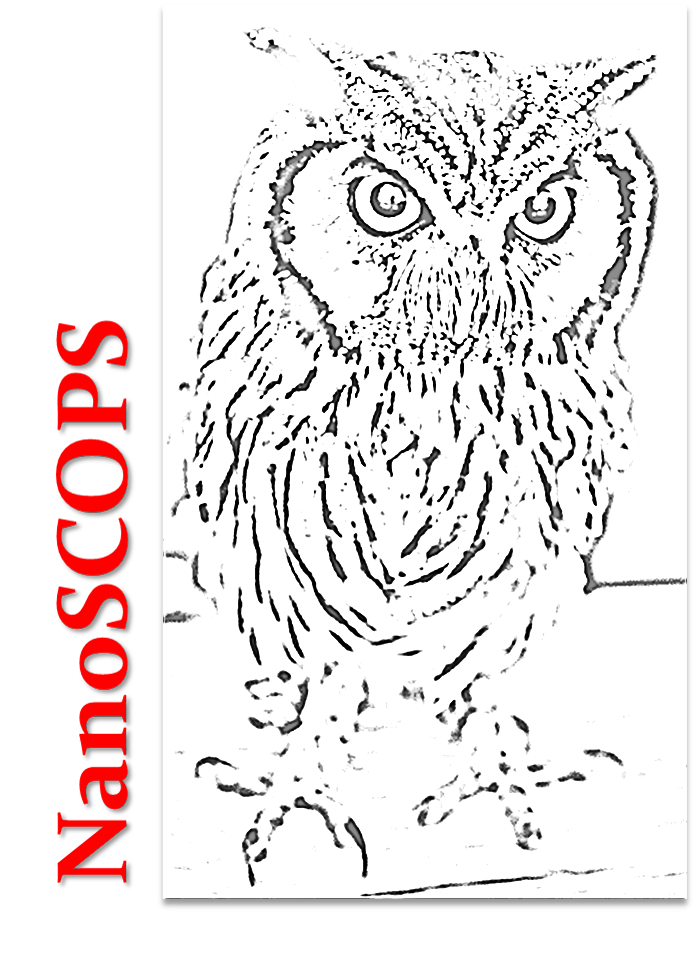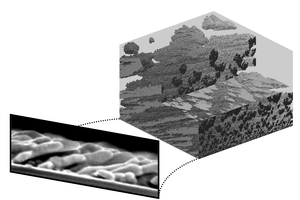The following video ilustrates the results presented in chapter 3 of the book “Láminas delgadas y recubrimientos. Preparación, propiedades y aplicaciones”, edited by Jose Mª Albella and published by the Spanish Council of Research (Consejo Superior de Investigaciones Científicas, CSIC) in 2017.
Simulations of thin film growth calculated using the Monte Carlo technique, considering different conditions for particle incorporation. From left to right: ballistic incorporation, lateral sticking incorporation, and solid-on-solid incorporation.
El vídeo siguiente ilustra los resultados presentados en el capítulo 3 del libro “Láminas delgadas y recubrimientos. Preparación, propiedades y aplicaciones”, editado por Jose Mª Albella y publicado por el Consejo Superior de Investigaciones Científicas (CSIC) en 2017.
Simulaciones de crecimiento de capas delgadas obtenidas mediante la técnica de Monte Carlo en diferentes condiciones de incorporación de las partículas: (de izquierda a derecha) incorporación de tipo balístico, incorporación con pegado lateral, e incorporación sobre sólido.
The following simulations ilustrate the results presented in the article “Growth regimes of porous gold thin films deposited by magnetron sputtering at oblique incidence: from compact to columnar microstructures”, by Rafael Alvarez, Jose Miguel García-Martín, Manuel Macías-Montero, Lola Gonzalez-Garcia, Juan C. González, Victor Rico, Jan Perlich, Jose Cotrino, Agustín R. González-Elipe, and Alberto Palmero, published in the journal Nanotechnology in January 2013.
The video below illustrates the growth of a gold thin film deposited by Magnetron Sputtering at Oblique Angles. It develops a tilted columnar microstructure, with large surface valleys and mesopores. The nanocolumns appear either well-separated and isolated from each other or grouped in small islands. This structure is experimentally found when the incidence angle of vapor atoms is above 80º and at low thermalization degree.
The video below illustrates the growth of another gold thin film deposited by Magnetron Sputtering at Oblique Angles. The film is rather compact, but surface valleys percolate from the very surface of the film to near the substrate through vertical tilted mesopores. This structure could also be seen as a tilted highly coalescent columnar structure, whereas mesopores can be devised as the empty space between the coalescent columns. This structure is experimentally found when the incidence angle of vapor atoms is between 60º and 80º and low thermalization degree.
The video below illustrates the growth of a gold thin film deposited by Magnetron Sputtering at Oblique Angles. The film is characterized by vertical coalescent column-like structures, with a high density of micro and mesopores occluded in the material, and with cavern-like surface patterns elongated in the vertical direction that penetrate deep into the bulk. Experimentally found at high thermalization degrees of the arriving atoms.
The following videos illustrate the results presented in the scientific paper “On the microstructure of thin films grown by an isotropically directed deposition flux” by R. Alvarez, P. Romero-Gomez, J. Gil-Rostra, J. Cotrino, F. Yubero,A. Palmero and A. R. Gonzalez-Elipe. JOURNAL OF APPLIED PHYSICS 108, 064316 (2010).
Computer simulation of the growth of a thin film when vapor atoms arrives at low energies and along no preferential direction. Top view.
Computer simulation of the growth of a thin film when vapor atoms arrives at low energies and along no preferential direction. Side view.







